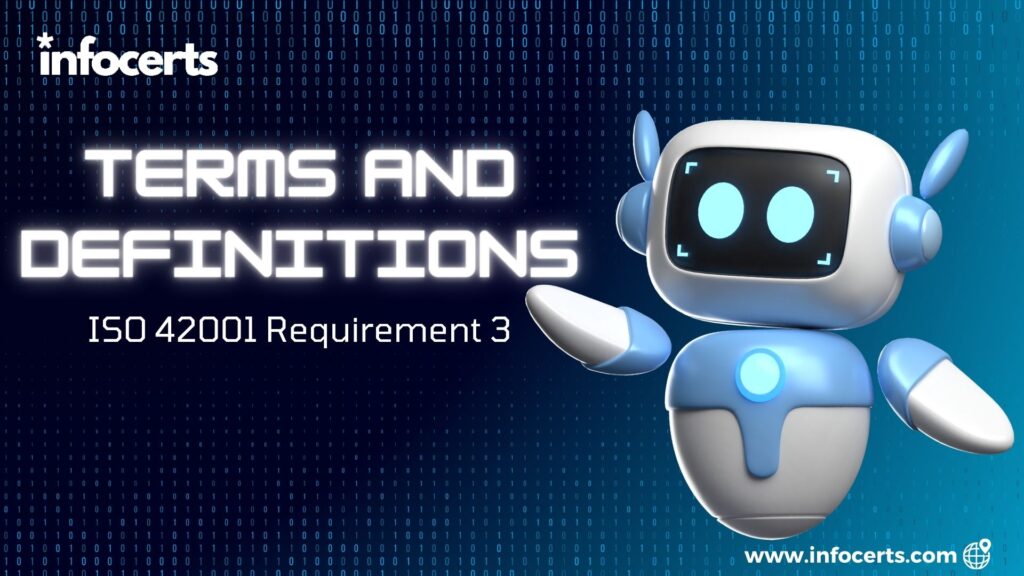Certainly! Let’s delve into ISO 42001 Requirement 3, which focuses on Terms and Definitions within the context of Artificial Intelligence Management Systems (AIMS). In this blog post, we’ll explore key concepts, provide examples, discuss implementation techniques, and touch upon auditing practices.
ISO 42001 Requirement 3: Terms and Definitions
1. Establishing a Common Lexicon
ISO 42001 Requirement 3 serves as the linguistic foundation for effective AI management. By defining terms such as “organisation,” “interested party,” and “management system,” this standard ensures that all stakeholders—compliance officers, developers, and decision-makers—share a common understanding. This shared language is essential for fostering clear communication and facilitating the ethical and responsible development of AI technologies.
2. Backbone for AI Governance
Standardized terms act as the backbone for navigating the complexities of AI governance. As a compliance officer, these definitions provide a clear framework within which to operate. Aligning your organization’s AI practices with global standards becomes more straightforward when everyone speaks the same language.
3. Bridging Gaps in Understanding
Requirement 3 bridges gaps in understanding among compliance officers. When developing, implementing, and overseeing AI technologies, a shared vocabulary ensures collaborative efforts. Whether discussing risk assessment, policy formulation, or ethical considerations, these terms facilitate meaningful dialogue.
4. Ethical and Responsible AI Development
The terms defined in Requirement 3 are integral to promoting ethical and responsible AI development. By adhering to standardized definitions, your organization can ensure that its AI systems prioritize safety, privacy, fairness, and transparency. These principles guide the development process, leading to more trustworthy AI solutions.
5. Integration with ISO 42001
Requirement 3 is not an isolated component; it is intricately linked with the broader ISO 42001 standard. From policy formulation to risk assessment, these terms apply across all aspects of AI management. At ISMS. online, we offer tools and services to help align your AI governance practices with ISO 42001 standards.
Examples and Implementation Techniques
To illustrate these concepts, let’s consider a scenario where an organization is deploying an AI system for customer sentiment analysis. We’ll define terms like “data privacy,” “algorithm transparency,” and “bias mitigation.” Tables can showcase these definitions alongside practical examples.
Auditing Techniques
When auditing an AI system, compliance officers can verify whether the organization adheres to the defined terms. Audits may focus on transparency reports, privacy impact assessments, and bias detection mechanisms.
In summary, ISO 42001 Requirement 3 lays the groundwork for effective AI management. By embracing standardized terms, organizations can navigate the AI landscape with clarity, ethics, and responsibility.
FaQs:
- What is ISO 42001 Requirement 3?
- Why are standardized terms important in AI management?
- How do these terms support ethical AI development?
- How does Requirement 3 integrate with the broader ISO 42001 standard?
- What does ISO 42001 define as an “organization”?
——————————————————————————————————————–
Infocerts, 5B 306 Riverside Greens, Panvel, Raigad 410206 Maharashtra, India
Contact us – https://www.infocerts.com

